Chiyoda no on-omote zen (Complete Chiyoda Outer Palace)
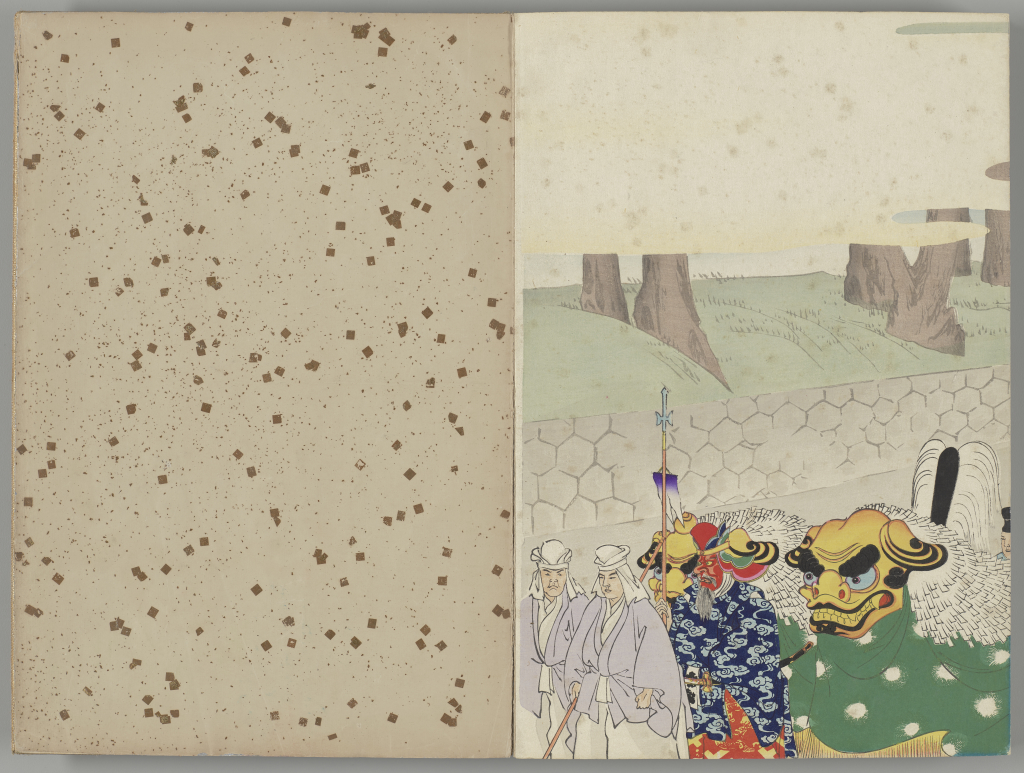
Hashimoto Chikanobu, Chiyoda no on-omote zen (Complete Chiyoda Outer Palace), 1897, color woodblock print on paper; ōban nishiki-e; accordion-fold album, Gift of an Anonymous Donor, public domain, 2009.56
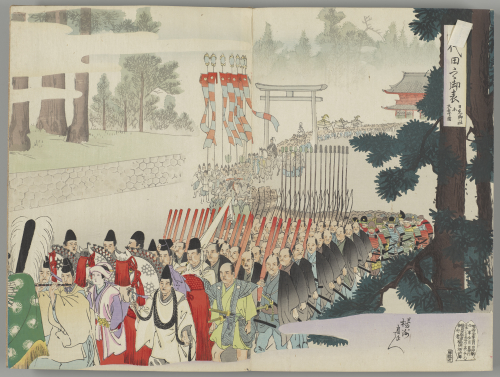
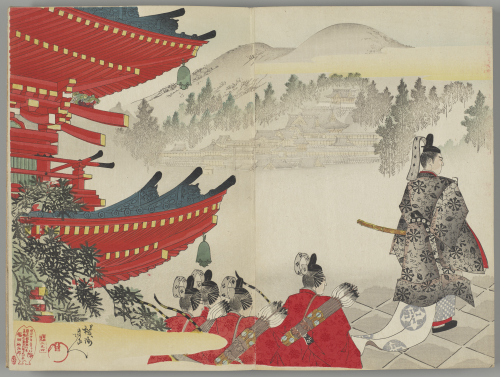
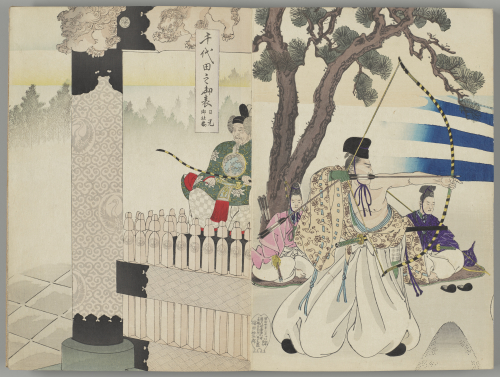
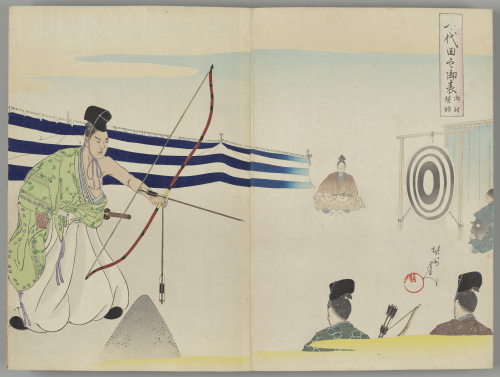
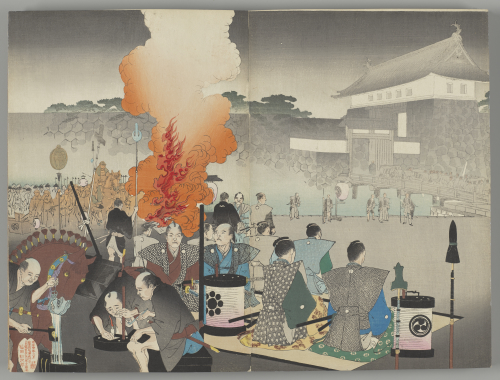
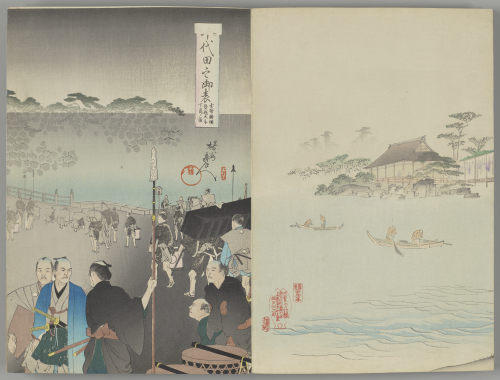
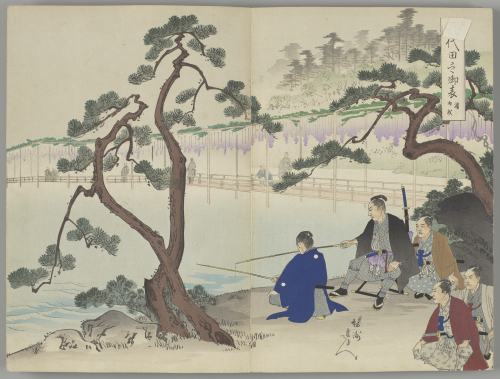
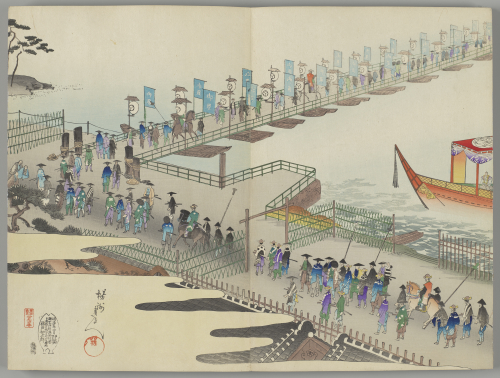
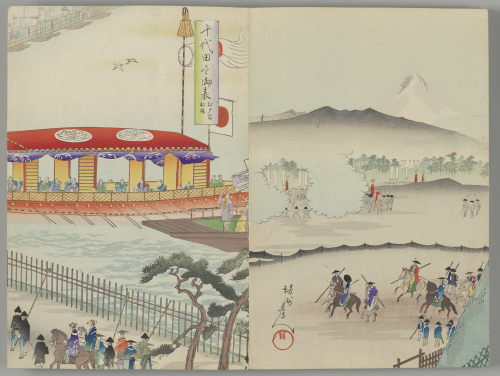
This work is not currently on view.
- Title
Chiyoda no on-omote zen (Complete Chiyoda Outer Palace)
- Related Titles
catalog entry: Chiyoda no on omote, zen (The Outer Compound of Chiyoda Palace, complete)
original language: 千代田之御表 全
translated: Complete Chiyoda Outer Palace
transliterated: Chiyoda no on-omote zen
- Artist
- Date
1897
- Period
Japan: Meiji period (1868-1912)
- Medium
color woodblock print on paper; ōban nishiki-e; accordion-fold album
- Dimensions (H x W x D)
each sheet: 13 7/8 in x 9 3/4 in
- Inscriptions & Markings
artist's seal: 揚, printed in red relief within circular cartouche, varies according to sheet; under artist's signature Transliteration: Yō Language: Japanese
title: 千代田之御表 全, printed in black ink within rectangular cartouche, front Transliteration (Translation): Chiyoda no on-omote zen (Complete Chiyoda Outer Palace) Language: Japanese Description: Title slip pasted on front cover of accordion-folded album.
carver's mark: 梅澤刻, printed in red or black relief within oval cartouche, varies according to sheet Transliteration (Translation): Umezawa koku (carved [by] Umezawa) Language: Japanese
carver's mark: 彫弥太, printed in black relief within oval cartouche, varies according to sheet Transliteration (Translation): Hori Yata (carver Yata) Language: Japanese Description: Seal of carver Watanabe Yatarō 渡辺弥太郎 (1850-1913)
carver's mark: 柘植刀, printed in red intaglio or black relief within oval cartouche, varies according to sheet Transliteration (Translation): Tsuge tō (carved [by] Tsuge) Language: Japanese
publisher's telephone: 電話浪花二百九十四番, printed in red or black relief within rectangular cartouche, varies according to sheet; beside publisher's mark Transliteration (Translation): Denwa Naniwa nihyaku kyūjūyon ban (Phone Naniwa 294) Language: Japanese
publisher's mark: 明治丗年二月 日印刷 日発行 // 臨写印刷兼発行者 // 日本橋区長谷川町十九番地 // 福田初次郎, printed in black or red relief within twin fish cartouche, varies according to sheet Transliteration (Translation): Meiji sanjūnen nigatsu nichi insatsu nichi hakkō // rinsha insatsu ken hakkōsha // Nihonbashi-ku Hasegawa-chō jūkyū banchi // Fukuda Hatsujirō (Printed and published Meiji 30 [1897], 2nd month [February] [unknown] day // [by] printer-publisher // Fukuda Hatsujirō // [at address:] Nihonbashi-ku Hasegawa-chō 19 banchi) Language: Japanese
carver's mark: 二卋彫栄, printed in red relief within rectangular cartouche, varies according to sheet Transliteration (Translation): Nisei Hori Ei (second generation Hori Ei) Language: Japanese Description: Seal of carver Watanabe Tsunejirō 渡辺常次郎 (dates unknown).
signature: 揚州周延, printed in black ink, varies according to sheet Transliteration: Yōshū Chikanobu Language: Japanese
- Collection Area
Asian Art; Graphic Arts
- Category
Books, Portfolios, and Manuscripts
Japanese Traditional Prints
- Object Type
album
relief print
- Culture
Japanese
- Credit Line
Gift of an Anonymous Donor
- Accession Number
2009.56
- Copyright
public domain
- Terms
From the ninth century onward, equestrian archery was the quintessential skill of the Japanese warrior. Even as the bow and arrow were supplanted by spears and guns, equestrian archery or yabusame retained its prestige and was fostered through ceremonial competitions.
Here, in a triptych that is part of a larger volume of scenes of life at Edo Castle, a samurai demonstrates his prowess at yabusame for the shogun. Galloping at top speed, he stands in his stirrups and aims at a small wooden target. During his run, he will shoot at three targets set 50 yards apart.
The sport of yabusame survives today and is most often enacted at Shinto shrines throughout Japan, where it is presented as an offering to the gods.
- Exhibitions
2011 The Artist's Touch, The Craftsman's Hand: Three Centuries of Japanese Prints from the Portland Art Museum Portland Art Museum
2013 Legendary Samurai Portland Art Museum









